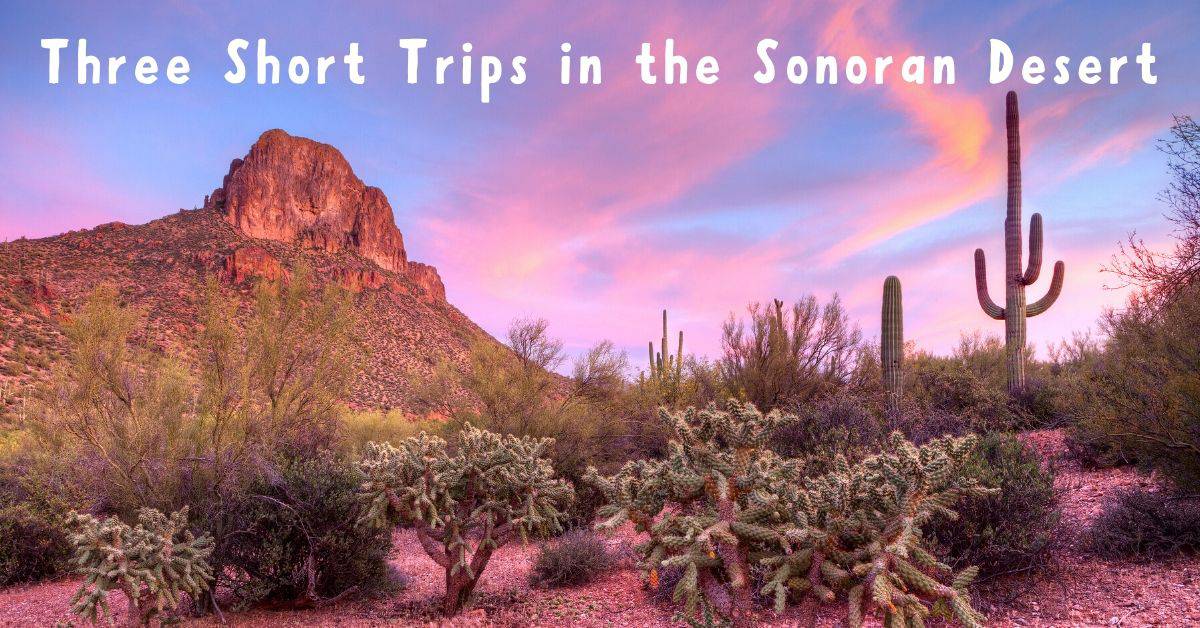- Finding the Right Indoor Plants for Desert Your Home - April 28, 2023
- Common Misunderstanding About Sun Exposure - April 18, 2023
- All about the Arizona Monsoon Season - May 21, 2021
The Sonoran Desert is an arid region covering approximately 100,000 square miles in southwestern Arizona and southeastern California, as well as most of Baja California and the western half of the state of Sonora, Mexico. Warm winters attract tourists to Sonora Desert resorts in Palm Springs, California, Tucson, and Phoenix, Arizona. It’s the hottest desert in Mexico and the second hottest desert in the United States. It’s also home to several national monuments, a few historic towns, and a number of unique flora and fauna. If you’ve been dreaming about exploring the Southwest United States, add these three Sonoran desert road trips to your list. The desert is full of surprises at every turn. Just remember to wear sunscreen and drink tons of water.
Ajo
With its rich tradition as a former copper mining hub, Ajo is a town with relaxed charm. Enjoy its southwest magic, low humidity and clear skies. Take in the historic Spanish Colonial Revival architecture, Sonoran Desert flora and fauna and panoramic views. Ajo is surrounded by 12 million acres of public and tribal land waiting to be explored. Appreciate the cultural richness created by the proximity of Mexico. Organ Pipe Cactus National Monument and Cabeza Prieta National Wildlife Refuge offer expansive hiking, camping and birding places.
Beauty abounds in breathtaking views and vibrant sunsets. Situated in the Arizona Upland Subdivision of the Sonoran Desert, the area is home to more than 1,000 species of plants and animals, many unique to the area. The unpolluted skies have attracted many astronomy buffs and stargazers. Peer through massive telescopes and enjoy educational programs and Native American exhibits at nearby Kitt Peak National Observatory. Formerly one of the largest copper mines in the world, the New Cornelia pit is over a mile wide. Visit the mine lookout for history displays and a view of the turquoise colored lake at the bottom of the pit.
Saguaro National Park
There are many densely forested regions in the Southwest but two areas of the Sonoran Desert either side of Tucson have been selected and preserved as Saguaro National Park – the Tucson Mountain (west) and Rincon Mountain (east) districts. Besides the ever-present saguaro, the park preserves a large variety of other cacti and desert plants. There is a rich array of fascinating wildlife, although the majority is nocturnal to beat the extreme Sonoran heat. Of the two regions of the national park, the western section is about 50% plains, and 50% mountains, and is generally more visited than the larger eastern section, of which a relatively small area is flat lowlands, crossed by most of the trails; the majority of the land is higher ground, including several peaks that rise over 8,000 feet. This fascinating landscape is diverse and full of geologic wonder at every turn. If you are looking for wide open spaces and sweeping mountain ranges, this place will thrill you.
Montezuma Castle National Monument
Montezuma Castle is situated about 90 feet (27 m) up a sheer limestone cliff, facing the adjacent Beaver Creek, which drains into the perennial Verde River just north of Camp Verde. It is one of the best-preserved cliff dwellings in North America, in part because of its ideal placement in a natural alcove that protects it from exposure to the elements. The precariousness of the dwelling’s location and its immense scale of floor space across five stories – suggest that the Sinagua were daring builders and skilled engineers. The 20-room structure is about 100 feet above the 1/3-mile loop interpretive trail. This amazing structure was built by farmers of the Southern Sinaguan culture, which actually have nothing to do with Montezuma, the ruler of the Aztec culture. The name, given by European settlers remains and still testifies to the grandeur of these amazing structures. The Montezuma Castle was one of the nation’s first national monuments, and continues to inspire visitors to this very.
CC Sunscreens
The Sonoran desert is the second hottest desert in the United States, which means the sun can be harsh. Remember to prepare for the weather and to stay as cool as possible. For more tips for staying cool in the sun contact us at CC sunscreens. We can help you stay in the shade through all the desert heat.

